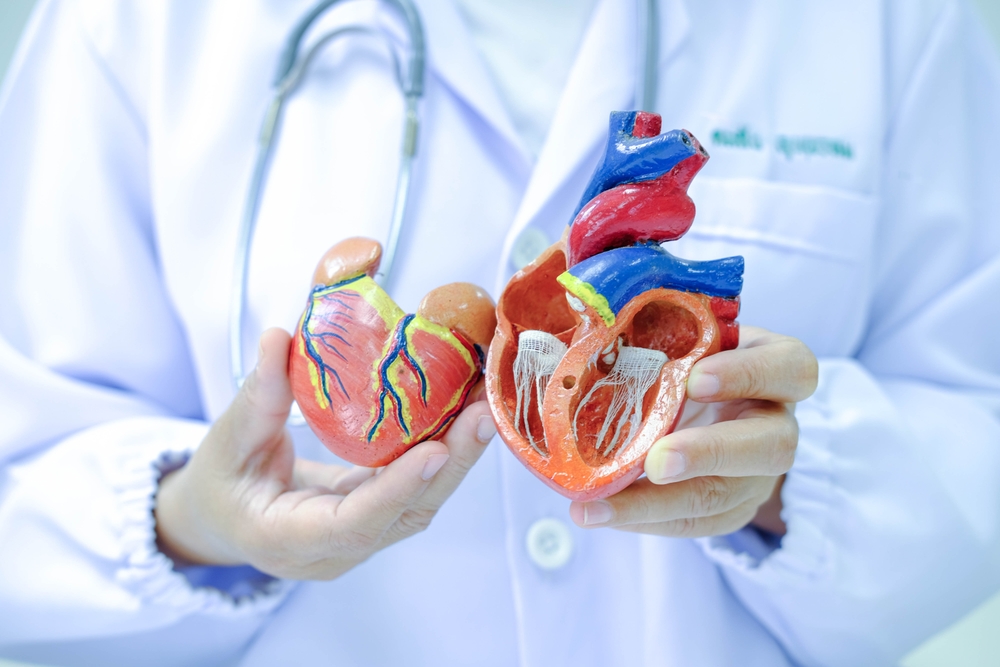What is Tricuspid and Pulmonic Valve Repair and Replacement?

The tricuspid and pulmonary valves both consist of three thin tissue flaps called cusps or leaflets that regulate the flow of blood from one area of your circulatory system to another.
Your surgeon will assess the details of your case if you are found to have a damaged tricuspid or pulmonary valve. They will also evaluate how severely damaged your valve is and how severe your symptoms are. The risks of controlling the illness with medication and lifestyle modifications will then be compared to the risks of surgery. Most of the time, it will be best to treat your illness non-surgically up to the point where heart surgery is required for another cause.
However, on a severely damaged tricuspid or pulmonary valve, it could be prudent to think about stand-alone surgery in exceptional cases.
In either scenario, it is typically preferred to repair the damaged valve as opposed to replacing it since a repaired valve typically leads to greater cardiac function, increased infection resistance, and improved long- and short-term survival.
Tricuspid valve:
One of the four valves that regulate the flow of blood through the heart is the tricuspid valve. Three flaps on the tricuspid valve prevent blood from flowing back into the heart when they are closed. In a disease or issue associated with the tricuspid valve,
- It may be absent (atresia)
- It may be constricted (stenosis)
- It may not be closing completely (regurgitation), or
- It may be deformed (Ebstein's abnormality)
Tricuspid valve surgery (repair and/or replacement) could be done to treat either problem. Open-heart surgery is used to operate on the tricuspid valve.
A. Repair: Traditionally, open heart surgery and opening of the chest bone or sternotomy are used to repair tricuspid valves. After the surgery, the bone is wired back together by the doctor to stop movement and promote healing. A tricuspid valve can occasionally be fixed by minimally invasive surgery.
The process of Tricuspid valve repair surgery involves:
- Repairing flaps, rips, and holes in the valve
- Reattaching the flaps
- Reshaping or eliminating extra valve tissue to allow the flaps to seal securely.
- Changing the valve's support wires to restore the structural support
- Separating fusion-prone valve flaps
- Adjusting or strengthening the ring that surrounds the valve is called the annulus.
The cone procedure is a type of valve surgery that cardiac surgeons may employ to treat tricuspid regurgitation if the Ebstein anomaly is the cause. The cardiac surgeon performs a cone procedure to separate the heart muscle from the leaflets that seal the tricuspid valve. After that, the leaflets are turned and reattached.
B. Replacement: The tricuspid valve may need to be replaced surgically if it cannot be repaired. A minimally invasive procedure or open heart surgery can be used to replace the tricuspid valve.
A surgeon replaces the sick or damaged tricuspid valve with a mechanical valve, a valve formed from cow, pig, or human heart tissue (biological tissue valve)., or both, during tricuspid valve replacement.
Your healthcare professionals and you will decide which type of valve is ideal for you after discussing the advantages and disadvantages of each type.
You will require lifelong blood thinners if you have a mechanical valve to prevent blood clots. Lifelong blood thinners are not necessary for biological tissue valves. Tissue valves, however, might deteriorate over time and might need to be replaced.
A minimally invasive catheter method may be used to replace a biological tissue tricuspid valve in place of open cardiac surgery in these cases.
Pulmonary valve:
Procedures for repairing and replacing the pulmonary valve are used to maintain and improve its functionality. The pulmonary valve is one of the four major heart valves that regulate the flow of blood into the heart. It is also known as the pulmonic valve.
The flow of blood is disturbed when the pulmonary valve's structure is impaired. This can be due to ageing, congenital heart defects, medical diagnoses including pulmonary stenosis, physical trauma, or some other causes. This makes the heart work harder to function correctly.
- Repair: the process of repairing the pulmonary valve is more or less the same as the process of repairing the tricuspid valve. In this procedure too, open heart surgery and chest bone incisions (sternotomy) are done. After the surgery, the bone is wired back together by the surgeon to stop movement and promote healing.
The process of pulmonary valve repair surgery involves:
- Separating fusion-prone valve flaps
- Synthesis of one or more new valve leaflets from cardiac tissue
- Taking off any patches that may have been applied during previous congenital heart surgery, and bringing the leaflets of the pulmonary valve together to form a functional valve
- Modifying or removing tissue to make the valve more firmly shut
- Adjusting or strengthening the ring that surrounds the valve
- Replacement: Open-heart surgery or minimally invasive techniques, which need smaller incisions than open-heart surgery, may be performed to replace a pulmonary valve.
Surgery may be required to replace the pulmonary valve if it cannot be repaired. The pulmonary valve is removed during this treatment, and either a mechanical valve or a valve produced from cow, pig, or human heart tissue (biological tissue valve) is used in its place.






